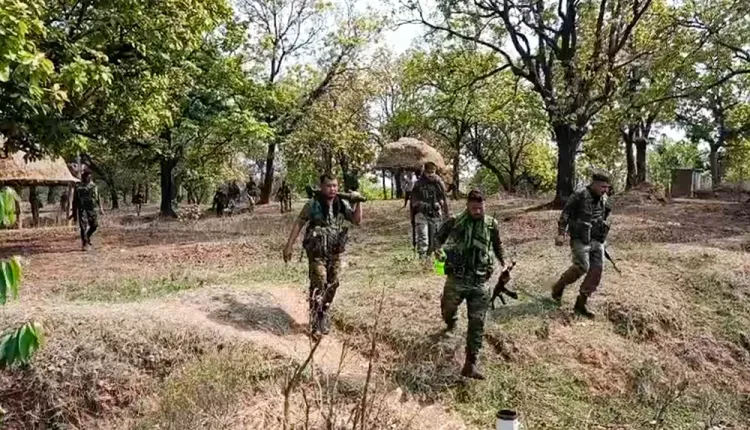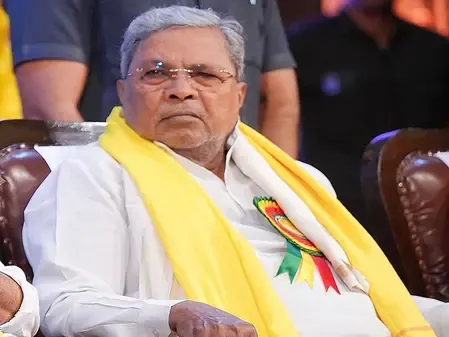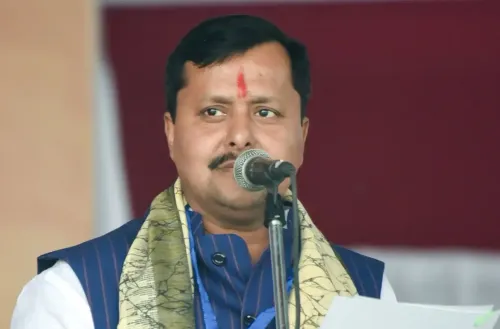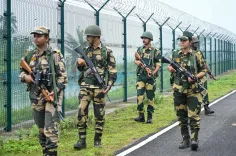What Led to the Surrender of 66 Maoists in Chhattisgarh?

Synopsis
Key Takeaways
- 66 Maoists surrendered in Chhattisgarh's Bastar region.
- High-ranking leaders among the surrendering cadres.
- Significant impact on left-wing extremism.
- Effective rehabilitation policies highlighted.
- Support for surrendered insurgents includes financial aid.
Raipur/Bastar, July 24 (NationPress) A remarkable surrender of 66 hardcore Maoists transpired throughout Chhattisgarh's Bastar region, representing a significant blow to left-wing extremism in the state. Among those who laid down their weapons were 49 cadres with a combined bounty of Rs 2.27 crore, including prominent leaders and seasoned insurgents, as stated by Chief Minister Vishnu Deo Sai.
The most notable of the surrendering individuals was Ramanna Irpa, also known as Jagdish, a Special Zonal Committee Member with a Rs 25 lakh reward on his head.
This mass surrender unfolded across five districts: 25 from Bijapur, 15 from Dantewada, 13 from Kanker, 8 from Narayanpur, and 5 from Sukma, all of whom officially renounced violence and pledged loyalty to the democratic framework, as the chief minister shared on his X handle.
A substantial number of those surrendering were female operatives, some of whom had been active in the Maoist ranks for over two decades.
Chief Minister Vishnu Deo Sai described this development as a turning point in Chhattisgarh's security landscape, particularly in the Bastar region. He noted that 1,570 Maoist cadres had surrendered in the past 18 months due to the state's surrender and rehabilitation strategy, labeling this trend as a testament to effective governance, infrastructure outreach, and public welfare initiatives.
He acknowledged Prime Minister Narendra Modi and Home Minister Amit Shah for facilitating this transformation through a “double engine government” approach.
At the heart of the rehabilitation initiative is the “Puna Margem” campaign, meaning Revival through Rehabilitation, which provides financial support, vocational training, and pathways for reintegration to surrendered insurgents.
In Dantewada, 16 Maoists surrendered on Thursday, including five high-bounty cadres and a couple known as Budhram alias Lalu Kuharam and Kamli alias Moti Potavi.
“Budhram, a divisional committee member with an Rs 8 lakh bounty, was involved in key ambushes in 2013 and 2018. Kamli participated in encounters in Irpanar, Gobel-Bhatbeda, and Thulthuli forest zones, with a bounty of Rs 5 lakh. Others included Pojja alias Podiya Madkam with a Rs 2 lakh bounty, alongside female cadres Aayate alias Sangeeta Sodi and Pandey Madvi, both with Rs 1 lakh rewards. Many surrendered cadres were previously engaged in sabotage activities like road disruptions, deforestation, and propaganda during bandh weeks,” stated Udit Pushkar, Assistant Superintendent of Police (operations) Dantewada, adding that among them was a couple.
Police officials confirmed that all surrendered cadres will receive immediate assistance and structured rehabilitation, with appeals directed at other Maoist members to abandon arms and return to civilian life.










